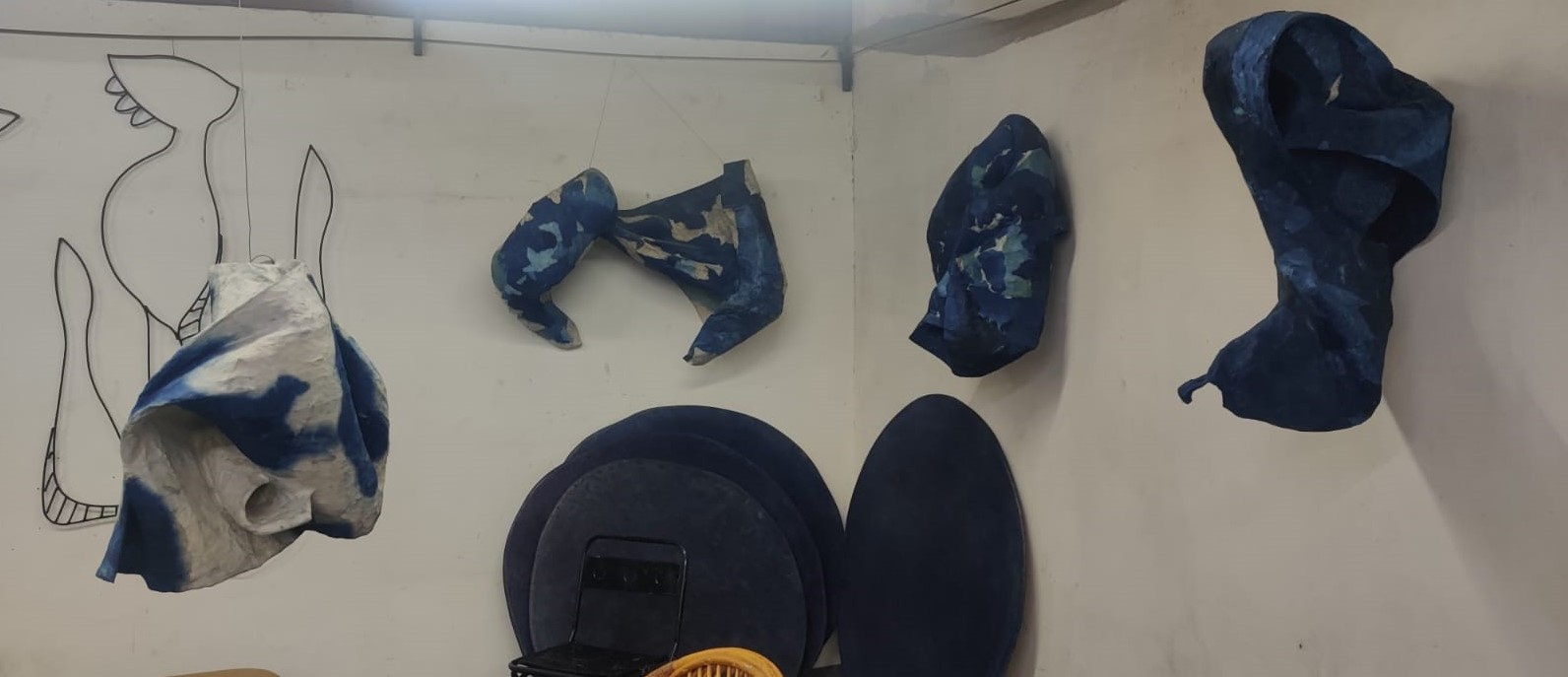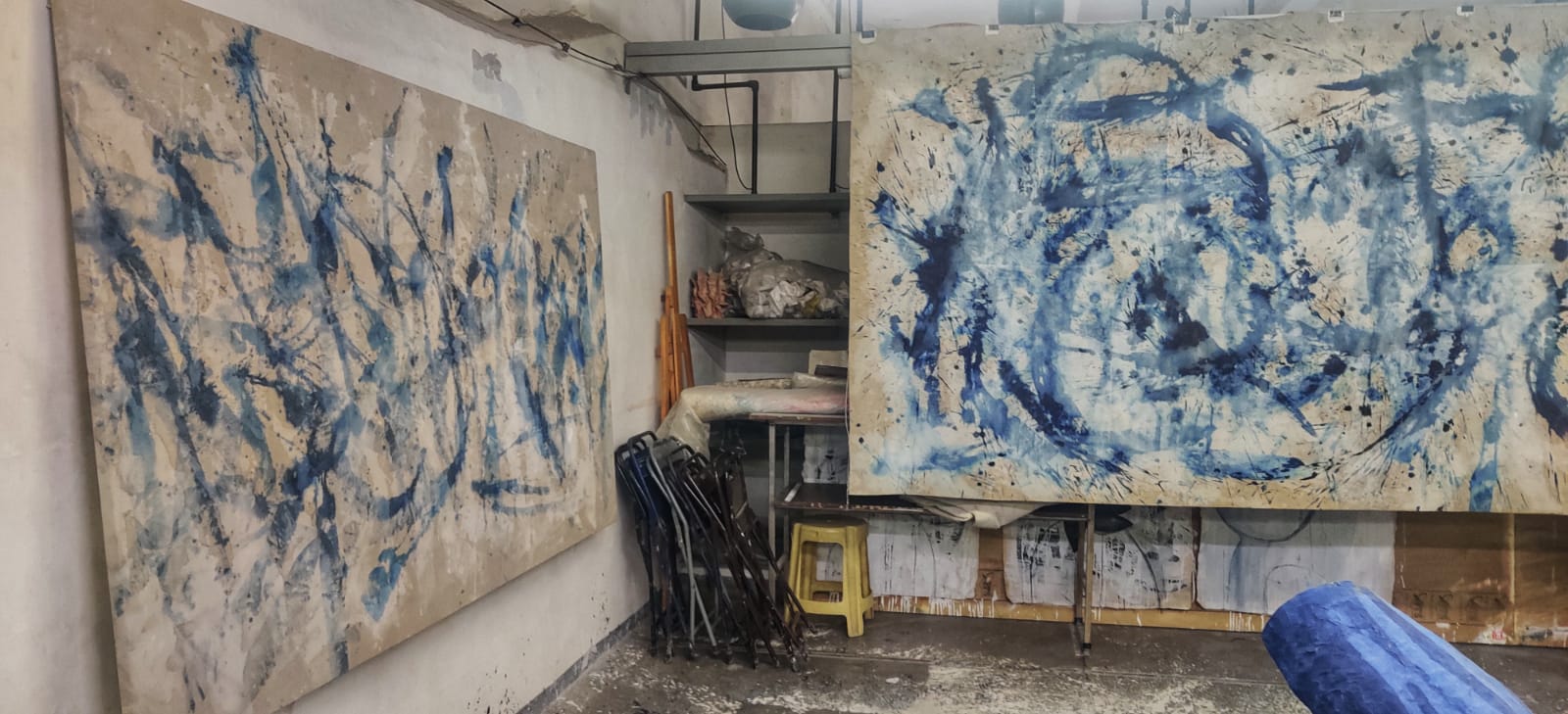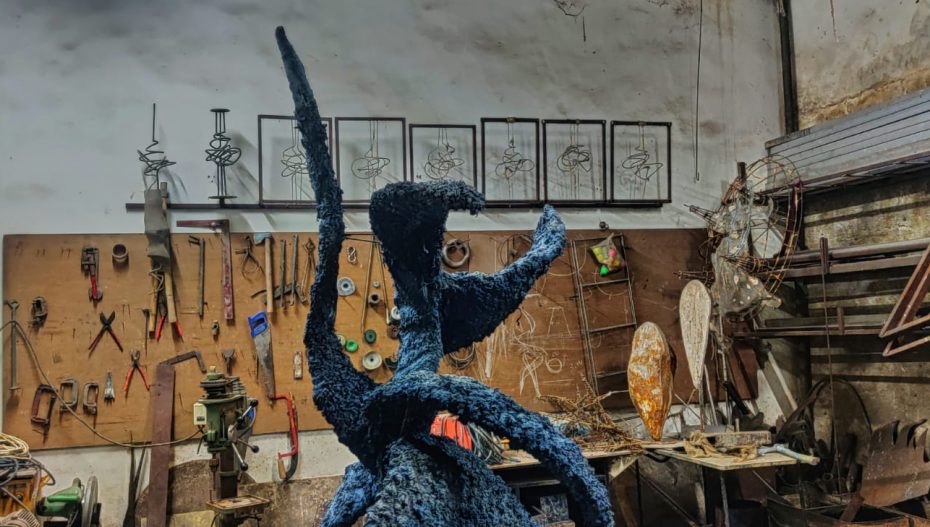The recent series on display at Sculptor, Vyom Mehta’s studio, is created by exploring the indigo pigment on multiple mediums and several techniques for several months. The narrow lanes of Dudheshwar take you to the studio, easily recognizable amidst the hustle of the textile industries from the coloured faceless paintings on the cement wall and the side of the overhead canopy, bell-shaped lights are hung and, on the floor, lays some pots and raw materials which has its own aesthetic appeal.
At the entrance, a red circular artwork made of cement and jute over a yellow background catches your eye as the tiny jute spikes give the artwork a 3D effect and the piece itself resembles a bindi. Walking further, a cone-shaped indigo artwork and another art piece standing straight made with wire and pipes make headway to the narrow corridor painted yellow on the one side acts as a door to different art forms.
The first home to Vyom, the studio, in all its modesty with different tools, mediums, and the old palettes and paint tins serve as a backdrop to the indigo artwork. The pieces include some sculptures standing straight, others hanging still on the wall, and some hanging down from the ceiling soothing the eyes in different shades of blue.

There are about 50 different artworks, some completely symmetric, while others forming different shapes which one’s mind tries to associate with one thing or the other. A contrast of surfaces and shapes make one wonder about the balance it creates.
Talking about the process in the studio, he says, “Waking up and seeing work in process, that is what gets me started”. “This artwork has unfolded in front of me as I went by the process,” he adds.
As everything came to an unprecedented halt due to the pandemic, the art scene was not spared, either. Everyone came across different hurdles to overcome as homes and offices became alike. Vyom Mehta went through the same.
The exhibitions were cancelled, and projects came to an indefinite halt. “The discomfort was more during the second lockdown as I had planned my entire year because finally, it seemed as we were returning to normal but all of it came crashing down,” Vyom says.
So, he turned to the material play that he began almost two years ago but had left in the process. He says, “For the first time after college, about 10 years later, I had the freedom to explore anything that I wanted, it did not need a purpose.” He adds, “When you are creating for a project or exhibition, you have a definite vision and a goal but now I woke up every day with excitement to create.”

At the time, it began with seven works that needed to be finished. “At the time, there was not a broader thematic thankfully, otherwise at some point, I would have fulfilled it,” says Vyom. “Reflecting upon it, it comes back to me, that the whole series is viewed from a post-human lens, the existence of life and creatures in an era after humans as that is what I have been thinking or reading about,” he adds.
“The freedom resulted in spontaneity and it was an intuitive process that allowed me to generate a rhythm that lasted as long,” says Vyom.

Among all the artwork, there is a miniature blue rope knotted iron charpai that misses your attention at first while looking all around at different shapes and forms of sculptures. It is hung vertically on an iron rod at the end of the last room in the studio. As I saw it while leaving, it reminded me of the blue charpai we used to have at my old childhood home on the terrace which my grandma habitually used extensively and I would look at the stars from the charpai whenever I got the chance.












